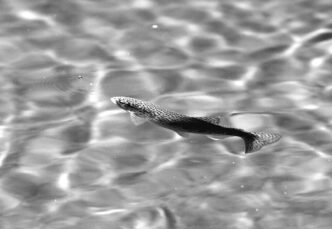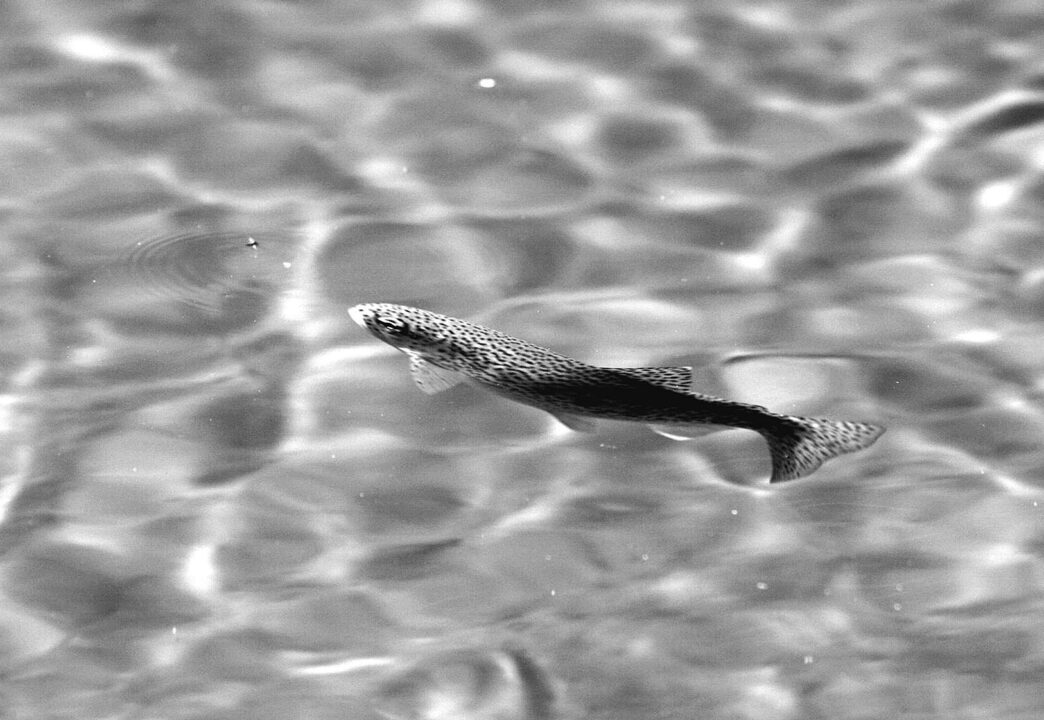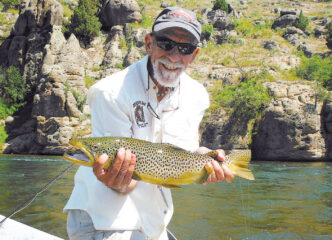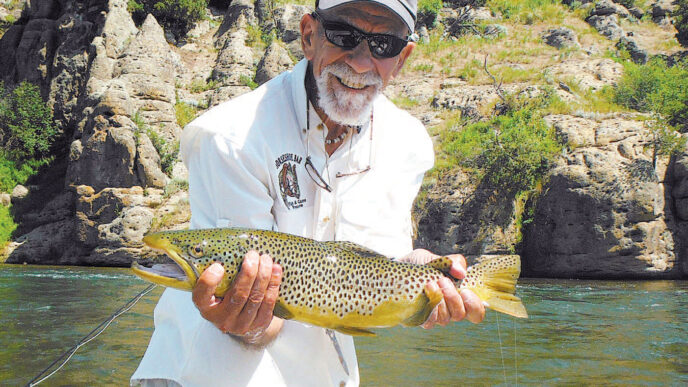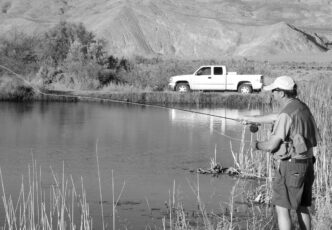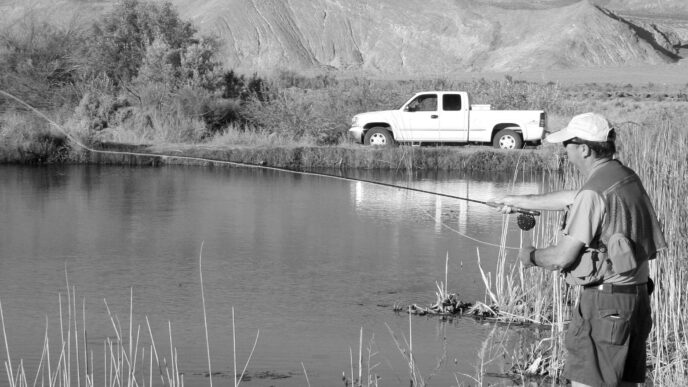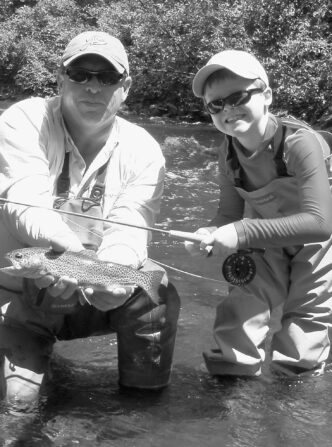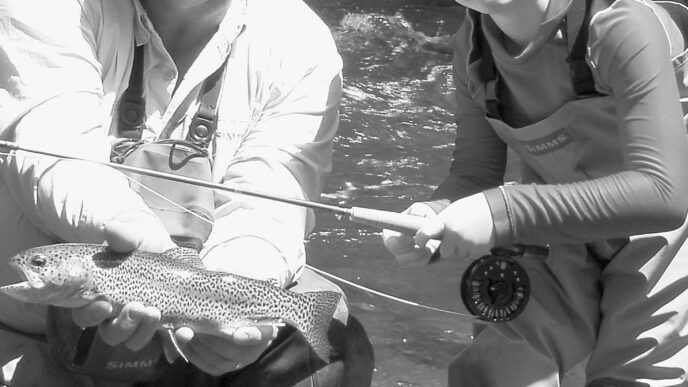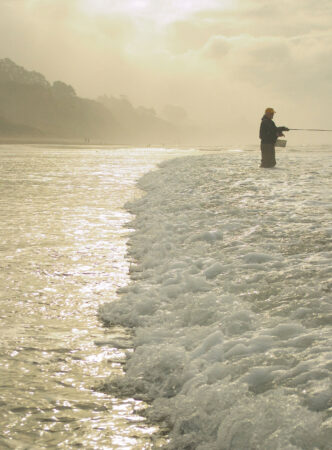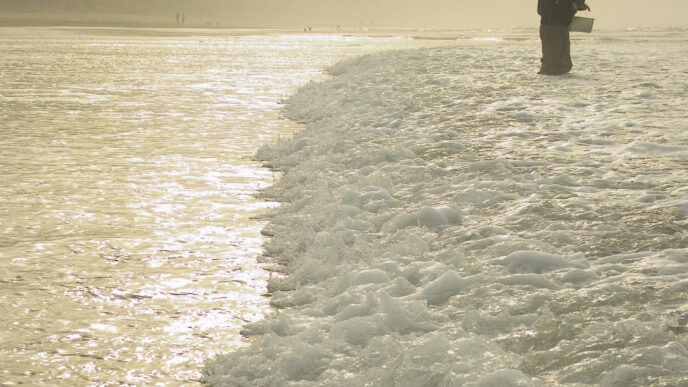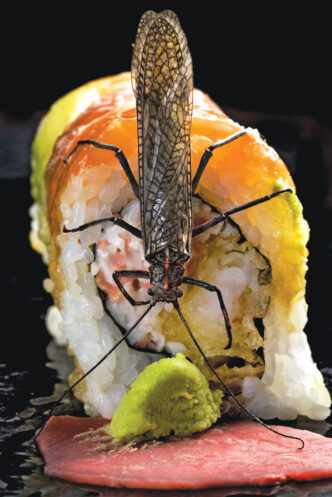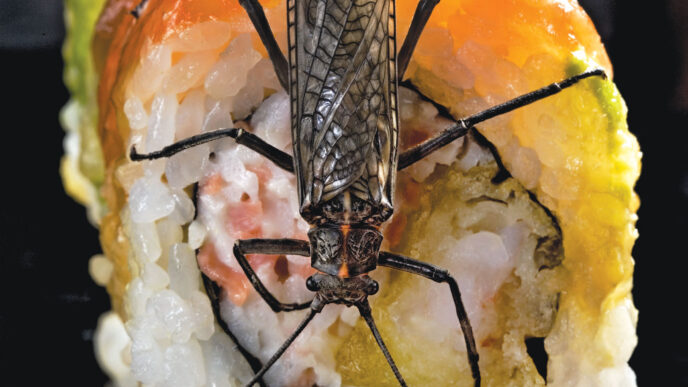Science is based on evidence, religion is based on faith, and fly fishing is somewhere in between. Recently, a landowner’s association acquired a fairly large lake that was known to grow trophy-sized trout. A consultant proposed that based on scientific studies, to protect the lake’s fish, only treble hooks should be used. The owners came to me for a second opinion.
The proposal seemed rather counterintuitive, so I gathered all of the peer-reviewed studies of hooking mortality that I could find that have been published over the past 40 years. Two of the studies found, indeed, that treble hooks cause less hooking mortality than single-spear hooks. A closer look, however, showed that the fish in the studies averaged less than seven inches long. They couldn’t get their lips over the hook and thus were hooked at the perimeter of the mouth, rather than in the throat. However, in nearly all of the studies, the most common factors linked to the risk of hooking mortality were hooking location and depth of penetration. Fish hooked in the gills or deep in the esophagus didn’t fare well compared with those getting stuck anywhere else.
An interesting side note of looking into these studies was the widely shared conclusion that statistically, barbed and barbless hooks produce similar hooking mortality. These findings were inclusive of the fact that the use of barbed hooks resulted in longer handling time to release the fish. In a review of all barbed-versus-barbless studies up to 1997, D. J. Schill and R. L. Scarpella found that “mean hooking mortality was 4.5% for barbed hooks and 4.2% for barbless hooks.” They conclude: “Because natural mortality for wild trout in streams commonly range from 30% to 65% annually, a 0.3% mean difference in hooking mortality for the two hook types is irrelevant . . . even when fish are subjected to repeated capture.”
Early management protocols hinged upon a single study that demonstrated a higher survivability for fish caught with barbless hooks, and since then, wild trout, trophy trout, blue ribbon, and catch-and-release waters have required single barbless hooks. A widely read, but deeply flawed meta-analysis published in 1992 erroneously gave validity to the use of barbless hooks as a management tool.
My gut feeling (faith?) is that barbless hooks facilitate reducing handling time, which should result in reduced mortality, but the scientific evidence repeatedly and convincingly demonstrates the fallacy of my belief. Personally, I will continue to use barbless hooks, if only because they are easier to remove from fish, nets, and human flesh. However, based on the science, I would hope that game wardens might shift their valuable time and efforts toward something more consequential than pursuing anglers who haven’t smashed a barb.
While examining the literature on hooking mortality, I stumbled across a reference to a book whose author had reviewed hundreds of studies regarding how trout receive information, process it, learn from it, and make future actions based on past decisions. The book, The Mind of the Trout: A Cognitive Ecology for Biologists and Anglers, is reviewed elsewhere in this magazine. As a counterpoint, I also reviewed What Trout Want: The Educated Trout and Other Myths. The two authors, though they even refer to some of the same studies, arrive at entirely opposite conclusions.
Evidence-based science sometimes isn’t as evidence-based as one might believe. It has been self-evident, for my generation at least, that animals feed in the most efficient and optimal way. That is, they consume as many calories as they possibly can while expending the fewest calories necessary. Behavioral ecologists call this “optimality theory.” We anglers have seen the fallacy of this theory time and time again when trout insist on eating small Tricos or midges, despite the presence of Green Drakes or meaty grasshoppers. The fly in the ointment of this simple and widely accepted theory (and there are at least a few flies) is that trout need to live long enough to pass on their genes, and unless they can do that, their net energy gain is for naught. When the criterion of longevity is taken into account, the neat and simple energy-flow equations of optimality theory that are taught to every college freshman on a biology track go right down the drain.
A good example can be made of the comparison of trout in Montana’s Hebgen Lake with fish in the next lake immediately downriver, Quake Lake. The landslide that dammed the Madison River and created Quake Lake flooded a huge stand of pine trees, and those trees today make hundreds of perfect open-water perches for fish-eating cormorants, bald eagles, and ospreys. Like Hebgen, Quake gets some amazing insect hatches, but unlike Hebgen, rising fish are relatively far and few between. The need for cheap and easy high-caloric intake by the trout is outweighed by the good chance of getting eaten by a bird. These fish eat at depth and perhaps don’t grow as large as their brothers upriver, but at least they get to spawn.
Optimality theory has driven some pretty cool work aimed at trying to figure out why fish do what they do. At first blush, one would expect that fish would prefer to inhabit the most productive reach of water, but sometimes this isn’t true. In one river, grayling were found feeding in greater abundance in a stretch of water that had far fewer bugs than some other stretches. It turns out that the fish were inhabiting real estate that had water temperatures conducive to metabolic efficiency. Though they might not be consuming as many calories as would be possible several hundred yards away, they were making better use of the ingested calories. Possibly they had learned that fewer feeding forays led to fewer interactions with predators, and the net benefit was that they lived long enough to procreate.
Based on both faith-based and evidenced-based beliefs, humans understand that procreation among relatives is evil. Keeping genetics all in the family can lead to disorders such as hemophilia, dwarfism, and banjo playing. However, inbreeding among salmon might be a key to their survival. Salmon and steelhead have a nearly supernatural ability to smell the scents of their natal gravel beds and to retain memory of those scents for years and over thousands of miles of migration. And salmon retain not only the scents of the spawning grounds, but of the fry around them. Years after they hatch, they return to spawn and actively brush aside foreign salmon to seek out and mate with their brothers or sisters. This turns out to be a wonderful survival strategy. (The account that biologists give of it is known as “kinship theory.”) If, for example, the stream in which they were born in has relatively fine gravel, then small eggs have a higher survival rate than normal-sized salmon eggs. By breeding with siblings, rather than with strays, the small-egg genetics likely will be passed on. In this day and age, when the spawning beds of wild salmon are being swamped by hatchery fish, it is nice to know that a wild fish will prefer to bed another native. A hatchery slut will sleep with anyone.
To quote the authors of both of the books mentioned above, “science can never prove anything to be true.” What was shown to be true often gets proven untrue over time. The open-minded among us are living in an adaptive belief system. How many times have you been told something to the effect that “fish don’t think, they react”? According to The Mind of the Trout, in some sense, fish do think. They learn not only by trial and error, but by watching other trout. They curiously explore their environment, build mental maps of their habitat, and bolt for the nearest or best cover when startled . . . even when its pitch dark. Their memory is quite remarkable. Trout taught to bump a button to get a food reward will immediately bump the button, even after three months outside the presence of a button. Perhaps the next time a trout refuses to eat your fly, it is not because you are doing something so incredibly wrong, but because the trout is doing something right. Give the fish a bit of credit.



